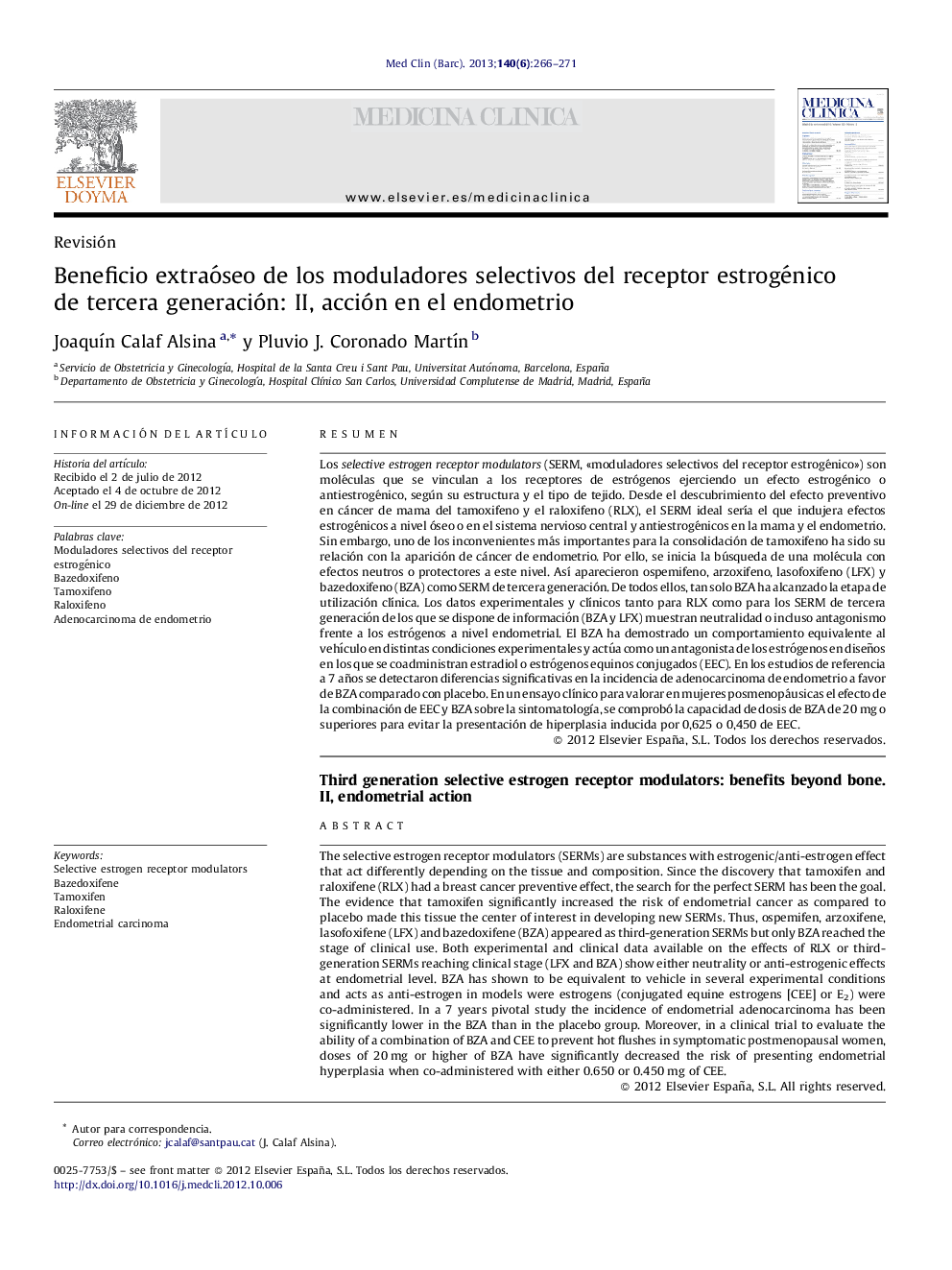| Article ID | Journal | Published Year | Pages | File Type |
|---|---|---|---|---|
| 3801415 | Medicina Clínica | 2013 | 6 Pages |
Abstract
The selective estrogen receptor modulators (SERMs) are substances with estrogenic/anti-estrogen effect that act differently depending on the tissue and composition. Since the discovery that tamoxifen and raloxifene (RLX) had a breast cancer preventive effect, the search for the perfect SERM has been the goal. The evidence that tamoxifen significantly increased the risk of endometrial cancer as compared to placebo made this tissue the center of interest in developing new SERMs. Thus, ospemifen, arzoxifene, lasofoxifene (LFX) and bazedoxifene (BZA) appeared as third-generation SERMs but only BZA reached the stage of clinical use. Both experimental and clinical data available on the effects of RLX or third-generation SERMs reaching clinical stage (LFX and BZA) show either neutrality or anti-estrogenic effects at endometrial level. BZA has shown to be equivalent to vehicle in several experimental conditions and acts as anti-estrogen in models were estrogens (conjugated equine estrogens [CEE] or E2) were co-administered. In a 7 years pivotal study the incidence of endometrial adenocarcinoma has been significantly lower in the BZA than in the placebo group. Moreover, in a clinical trial to evaluate the ability of a combination of BZA and CEE to prevent hot flushes in symptomatic postmenopausal women, doses of 20Â mg or higher of BZA have significantly decreased the risk of presenting endometrial hyperplasia when co-administered with either 0.650 or 0.450Â mg of CEE.
Keywords
Related Topics
Health Sciences
Medicine and Dentistry
Medicine and Dentistry (General)
Authors
JoaquÃn Calaf Alsina, Pluvio J. Coronado MartÃn,
